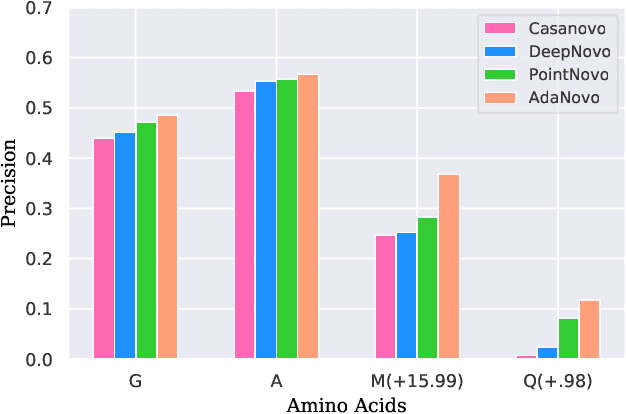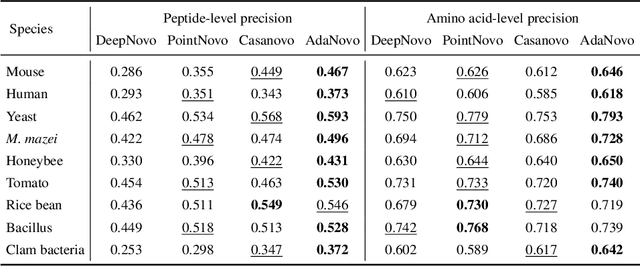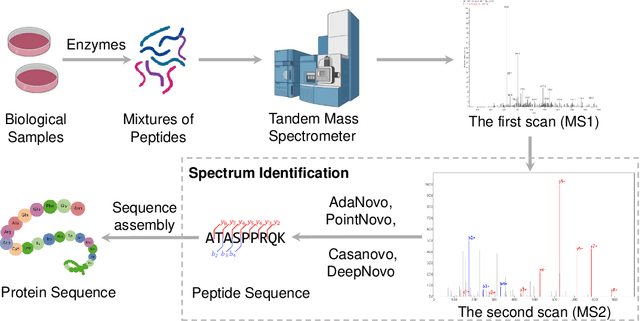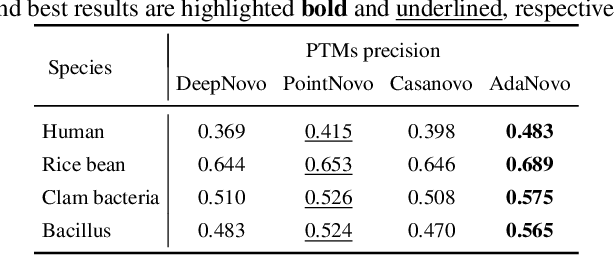Wenjie Du
LLM-Explorer: Towards Efficient and Affordable LLM-based Exploration for Mobile Apps
May 15, 2025Abstract:Large language models (LLMs) have opened new opportunities for automated mobile app exploration, an important and challenging problem that used to suffer from the difficulty of generating meaningful UI interactions. However, existing LLM-based exploration approaches rely heavily on LLMs to generate actions in almost every step, leading to a huge cost of token fees and computational resources. We argue that such extensive usage of LLMs is neither necessary nor effective, since many actions during exploration do not require, or may even be biased by the abilities of LLMs. Further, based on the insight that a precise and compact knowledge plays the central role for effective exploration, we introduce LLM-Explorer, a new exploration agent designed for efficiency and affordability. LLM-Explorer uses LLMs primarily for maintaining the knowledge instead of generating actions, and knowledge is used to guide action generation in a LLM-less manner. Based on a comparison with 5 strong baselines on 20 typical apps, LLM-Explorer was able to achieve the fastest and highest coverage among all automated app explorers, with over 148x lower cost than the state-of-the-art LLM-based approach.
EDBench: Large-Scale Electron Density Data for Molecular Modeling
May 14, 2025Abstract:Existing molecular machine learning force fields (MLFFs) generally focus on the learning of atoms, molecules, and simple quantum chemical properties (such as energy and force), but ignore the importance of electron density (ED) $\rho(r)$ in accurately understanding molecular force fields (MFFs). ED describes the probability of finding electrons at specific locations around atoms or molecules, which uniquely determines all ground state properties (such as energy, molecular structure, etc.) of interactive multi-particle systems according to the Hohenberg-Kohn theorem. However, the calculation of ED relies on the time-consuming first-principles density functional theory (DFT) which leads to the lack of large-scale ED data and limits its application in MLFFs. In this paper, we introduce EDBench, a large-scale, high-quality dataset of ED designed to advance learning-based research at the electronic scale. Built upon the PCQM4Mv2, EDBench provides accurate ED data, covering 3.3 million molecules. To comprehensively evaluate the ability of models to understand and utilize electronic information, we design a suite of ED-centric benchmark tasks spanning prediction, retrieval, and generation. Our evaluation on several state-of-the-art methods demonstrates that learning from EDBench is not only feasible but also achieves high accuracy. Moreover, we show that learning-based method can efficiently calculate ED with comparable precision while significantly reducing the computational cost relative to traditional DFT calculations. All data and benchmarks from EDBench will be freely available, laying a robust foundation for ED-driven drug discovery and materials science.
Soft causal learning for generalized molecule property prediction: An environment perspective
May 07, 2025Abstract:Learning on molecule graphs has become an increasingly important topic in AI for science, which takes full advantage of AI to facilitate scientific discovery. Existing solutions on modeling molecules utilize Graph Neural Networks (GNNs) to achieve representations but they mostly fail to adapt models to out-of-distribution (OOD) samples. Although recent advances on OOD-oriented graph learning have discovered the invariant rationale on graphs, they still ignore three important issues, i.e., 1) the expanding atom patterns regarding environments on graphs lead to failures of invariant rationale based models, 2) the associations between discovered molecular subgraphs and corresponding properties are complex where causal substructures cannot fully interpret the labels. 3) the interactions between environments and invariances can influence with each other thus are challenging to be modeled. To this end, we propose a soft causal learning framework, to tackle the unresolved OOD challenge in molecular science, from the perspective of fully modeling the molecule environments and bypassing the invariant subgraphs. Specifically, we first incorporate chemistry theories into our graph growth generator to imitate expaned environments, and then devise an GIB-based objective to disentangle environment from whole graphs and finally introduce a cross-attention based soft causal interaction, which allows dynamic interactions between environments and invariances. We perform experiments on seven datasets by imitating different kinds of OOD generalization scenarios. Extensive comparison, ablation experiments as well as visualized case studies demonstrate well generalization ability of our proposal.
AutoDroid-V2: Boosting SLM-based GUI Agents via Code Generation
Dec 24, 2024Abstract:Large language models (LLMs) have brought exciting new advances to mobile UI agents, a long-standing research field that aims to complete arbitrary natural language tasks through mobile UI interactions. However, existing UI agents usually demand high reasoning capabilities of powerful large models that are difficult to be deployed locally on end-users' devices, which raises huge concerns about user privacy and centralized serving cost. One way to reduce the required model size is to customize a smaller domain-specific model with high-quality training data, e.g. large-scale human demonstrations of diverse types of apps and tasks, while such datasets are extremely difficult to obtain. Inspired by the remarkable coding abilities of recent small language models (SLMs), we propose to convert the UI task automation problem to a code generation problem, which can be effectively solved by an on-device SLM and efficiently executed with an on-device code interpreter. Unlike normal coding tasks that can be extensively pretrained with public datasets, generating UI automation code is challenging due to the diversity, complexity, and variability of target apps. Therefore, we adopt a document-centered approach that automatically builds fine-grained API documentation for each app and generates diverse task samples based on this documentation. By guiding the agent with the synthetic documents and task samples, it learns to generate precise and efficient scripts to complete unseen tasks. Based on detailed comparisons with state-of-the-art mobile UI agents, our approach effectively improves the mobile task automation with significantly higher success rates and lower latency/token consumption. Code will be open-sourced.
FlexMol: A Flexible Toolkit for Benchmarking Molecular Relational Learning
Oct 19, 2024



Abstract:Molecular relational learning (MRL) is crucial for understanding the interaction behaviors between molecular pairs, a critical aspect of drug discovery and development. However, the large feasible model space of MRL poses significant challenges to benchmarking, and existing MRL frameworks face limitations in flexibility and scope. To address these challenges, avoid repetitive coding efforts, and ensure fair comparison of models, we introduce FlexMol, a comprehensive toolkit designed to facilitate the construction and evaluation of diverse model architectures across various datasets and performance metrics. FlexMol offers a robust suite of preset model components, including 16 drug encoders, 13 protein sequence encoders, 9 protein structure encoders, and 7 interaction layers. With its easy-to-use API and flexibility, FlexMol supports the dynamic construction of over 70, 000 distinct combinations of model architectures. Additionally, we provide detailed benchmark results and code examples to demonstrate FlexMol's effectiveness in simplifying and standardizing MRL model development and comparison.
Text-guided Diffusion Model for 3D Molecule Generation
Oct 04, 2024Abstract:The de novo generation of molecules with targeted properties is crucial in biology, chemistry, and drug discovery. Current generative models are limited to using single property values as conditions, struggling with complex customizations described in detailed human language. To address this, we propose the text guidance instead, and introduce TextSMOG, a new Text-guided Small Molecule Generation Approach via 3D Diffusion Model which integrates language and diffusion models for text-guided small molecule generation. This method uses textual conditions to guide molecule generation, enhancing both stability and diversity. Experimental results show TextSMOG's proficiency in capturing and utilizing information from textual descriptions, making it a powerful tool for generating 3D molecular structures in response to complex textual customizations.
TSI-Bench: Benchmarking Time Series Imputation
Jun 18, 2024Abstract:Effective imputation is a crucial preprocessing step for time series analysis. Despite the development of numerous deep learning algorithms for time series imputation, the community lacks standardized and comprehensive benchmark platforms to effectively evaluate imputation performance across different settings. Moreover, although many deep learning forecasting algorithms have demonstrated excellent performance, whether their modeling achievements can be transferred to time series imputation tasks remains unexplored. To bridge these gaps, we develop TSI-Bench, the first (to our knowledge) comprehensive benchmark suite for time series imputation utilizing deep learning techniques. The TSI-Bench pipeline standardizes experimental settings to enable fair evaluation of imputation algorithms and identification of meaningful insights into the influence of domain-appropriate missingness ratios and patterns on model performance. Furthermore, TSI-Bench innovatively provides a systematic paradigm to tailor time series forecasting algorithms for imputation purposes. Our extensive study across 34,804 experiments, 28 algorithms, and 8 datasets with diverse missingness scenarios demonstrates TSI-Bench's effectiveness in diverse downstream tasks and potential to unlock future directions in time series imputation research and analysis. The source code and experiment logs are available at https://github.com/WenjieDu/AwesomeImputation.
NovoBench: Benchmarking Deep Learning-based De Novo Peptide Sequencing Methods in Proteomics
Jun 16, 2024Abstract:Tandem mass spectrometry has played a pivotal role in advancing proteomics, enabling the high-throughput analysis of protein composition in biological tissues. Many deep learning methods have been developed for \emph{de novo} peptide sequencing task, i.e., predicting the peptide sequence for the observed mass spectrum. However, two key challenges seriously hinder the further advancement of this important task. Firstly, since there is no consensus for the evaluation datasets, the empirical results in different research papers are often not comparable, leading to unfair comparison. Secondly, the current methods are usually limited to amino acid-level or peptide-level precision and recall metrics. In this work, we present the first unified benchmark NovoBench for \emph{de novo} peptide sequencing, which comprises diverse mass spectrum data, integrated models, and comprehensive evaluation metrics. Recent impressive methods, including DeepNovo, PointNovo, Casanovo, InstaNovo, AdaNovo and $\pi$-HelixNovo are integrated into our framework. In addition to amino acid-level and peptide-level precision and recall, we evaluate the models' performance in terms of identifying post-tranlational modifications (PTMs), efficiency and robustness to peptide length, noise peaks and missing fragment ratio, which are important influencing factors while seldom be considered. Leveraging this benchmark, we conduct a large-scale study of current methods, report many insightful findings that open up new possibilities for future development. The benchmark will be open-sourced to facilitate future research and application.
Unveiling the Secrets: How Masking Strategies Shape Time Series Imputation
May 26, 2024Abstract:In this study, we explore the impact of different masking strategies on time series imputation models. We evaluate the effects of pre-masking versus in-mini-batch masking, normalization timing, and the choice between augmenting and overlaying artificial missingness. Using three diverse datasets, we benchmark eleven imputation models with different missing rates. Our results demonstrate that masking strategies significantly influence imputation accuracy, revealing that more sophisticated and data-driven masking designs are essential for robust model evaluation. We advocate for refined experimental designs and comprehensive disclosureto better simulate real-world patterns, enhancing the practical applicability of imputation models.
AdaNovo: Adaptive \emph{De Novo} Peptide Sequencing with Conditional Mutual Information
Mar 15, 2024



Abstract:Tandem mass spectrometry has played a pivotal role in advancing proteomics, enabling the analysis of protein composition in biological samples. Despite the development of various deep learning methods for identifying amino acid sequences (peptides) responsible for observed spectra, challenges persist in \emph{de novo} peptide sequencing. Firstly, prior methods struggle to identify amino acids with post-translational modifications (PTMs) due to their lower frequency in training data compared to canonical amino acids, further resulting in decreased peptide-level identification precision. Secondly, diverse types of noise and missing peaks in mass spectra reduce the reliability of training data (peptide-spectrum matches, PSMs). To address these challenges, we propose AdaNovo, a novel framework that calculates conditional mutual information (CMI) between the spectrum and each amino acid/peptide, using CMI for adaptive model training. Extensive experiments demonstrate AdaNovo's state-of-the-art performance on a 9-species benchmark, where the peptides in the training set are almost completely disjoint from the peptides of the test sets. Moreover, AdaNovo excels in identifying amino acids with PTMs and exhibits robustness against data noise. The supplementary materials contain the official code.
 Add to Chrome
Add to Chrome Add to Firefox
Add to Firefox Add to Edge
Add to Edge